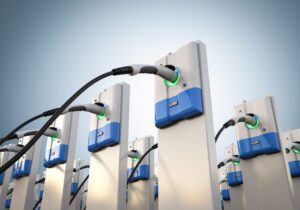Chinese EV automakers have recently been heavily pushing into the markets in Southeast Asia. And not only do they push on the sales side to use ASEAN markets to sell their latest EV models. They have also started establishing production sites for electric vehicles or EV batteries. Especially Thailand has been a major hub for investment in EV manufacturing recently.
Thailand as emerging hub for EV production
Thailand is a premier trade ally of China and has been promoting the adoption of electric cars by offering a subsidy for each EV of up to 150,000 Baht along with other incentives such as import tax cuts. It is positioning itself as a regional hub for EV production and has attracted investment from several major Chinese automakers.
Chinese car manufacturer SAIC Motor has just opened its first battery plant for electric vehicles in Chonburi province. Neta Auto has also started production at its first overseas electric vehicle plant in Thailand with an annual capacity of 20,000 EVs. BYD has signed a deal to build its first overseas plant in Thailand, which is about to start operating in 2024 with a planned annual capacity of 150,000 cars to supply Southeast Asian markets. Changan Automobile just signed an agreement with Thailand’s Board of Investment (BoI) to build an electric vehicle factory in the coastal Rayong province. Other carmakers (e.g. from Korea or Japan) are planning to follow suit.
OEMs entering ASEAN have to ensure supply for the new plants
Car OEMs enter emerging markets such as ASEAN since they are expecting strong market growth. A local production is usually favorable for several reasons. It reduces transportation cost to meet the local demand. It avoids instable customs situations (depending on FTAs) with relatively high taxes on imported finished goods. And it reduces cost uncertainty due to hardly predictable currency fluctuations. Establishing a reliable and qualified supply base is key for thriving in these markets.
When assessing the local supplier landscape, carmakers usually find several constraints. Local suppliers oftentimes have quality and tolerances below usual standards. Their incumbent suppliers usually have limited local presence and face high investment needs and risks when moving to new markets. Specific local business mindsets with lack of transparency can be a serious challenge. To achieve appropriate local supply, carmakers need to find the right approach for the local supply market in order to meet tight SOP timelines.
SEA Supply Base constraints require specific supply approach
Car OEMs have several options to mitigate these supply base risks. They can increase in-house production with higher vertical integration for strategic components such as the battery. They can develop local suppliers to achieve required performance levels. They can leverage developed suppliers from other industries. They can localize strategic incumbent suppliers and support them in ramping up a local supplier park. Or they can finally exploit existing production lines, tools and infrastructure of incumbent suppliers (in low cost countries) and import components.
These options need to be assessed and evaluated for Thailand or other ASEAN markets. In any case it can be expected that on its way to become sustainable and reduce carbon dioxide emissions, Southeast Asia will have a thriving EV production and supplier landscape in the upcoming years.





